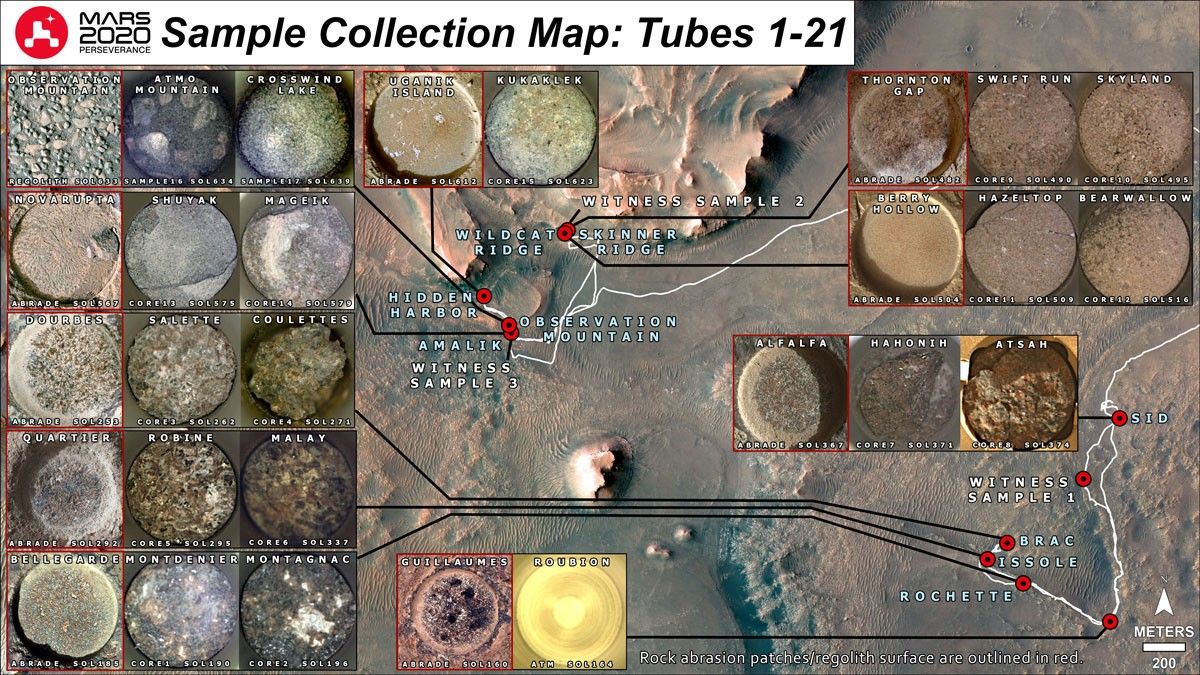A Map of Perseverance’s Samples
| Credit | NASA/JPL-Caltech |
|---|---|
| Language |
|
Shown here is a representation of the 21 sample tubes (containing rock, regolith, atmosphere, and witness materials) that have been sealed to date by NASA’s Perseverance Mars rover. Red dots indicate the locations where each sample was collected.
Squares outlined in red shows the texture of an area about 2 inches (5 centimeters) across on a particular rock sample after it was worn down by the rover’s abrasion tool (with the exception of “Observation Mountain,” which is an image of the surface of a pile of regolith, or broken rock and dust). The one or two squares immediately to the right of each red-oulined square shows an image of the top of each sample tube after the sample was acquired.
Figure A is the same image, but the 10 samples highlighted in green that have been selected for deposit in Perseverance’s first depot – at the “Three Forks” area of Jezero Crater.
A key objective for Perseverance’s mission on Mars is astrobiology, including the search for signs of ancient microbial life. The rover will characterize the planet’s geology and past climate, pave the way for human exploration of the Red Planet, and be the first mission to collect and cache Martian rock and regolith (broken rock and dust).
Subsequent NASA missions, in cooperation with ESA (European Space Agency), would send spacecraft to Mars to collect these sealed samples from the surface and return them to Earth for in-depth analysis.
The Mars 2020 Perseverance mission is part of NASA’s Moon to Mars exploration approach, which includes Artemis missions to the Moon that will help prepare for human exploration of the Red Planet.
NASA’s Jet Propulsion Laboratory, which is managed for the agency by Caltech in Pasadena, California, built and manages operations of the Perseverance rover.
For more about Perseverance:
mars.nasa.gov/mars2020/




























